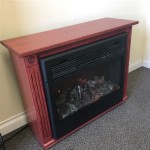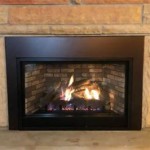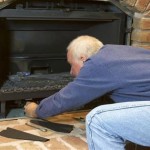Gas Fireplace Or Wood Burning Stove: Exploring the Essential Aspects
The allure of a warm and inviting ambiance during the chilly winter months is undeniable. Whether you prefer the gentle glow of a gas fireplace or the crackling flames of a wood-burning stove, both options offer unique experiences and benefits. To help you make an informed decision, let's delve into the essential aspects of each option.
Gas Fireplace: Convenience and Control
Gas fireplaces offer the ultimate in convenience and control. They ignite instantly with the push of a button or remote, providing immediate warmth without the need for preparation or cleanup. Moreover, gas fireplaces often come equipped with thermostats, allowing for precise temperature regulation and energy efficiency. They also emit fewer emissions compared to wood-burning stoves, making them a more environmentally friendly choice.
Wood-Burning Stove: Ambiance and Comfort
Wood-burning stoves emanate an unparalleled ambiance with their captivating flames and crackling sounds. They generate intense heat, providing a cozy and welcoming atmosphere. The natural aroma of burning wood further enhances the sensory experience, creating a truly immersive and relaxing retreat. However, it's important to note that wood-burning stoves require more preparation, including gathering and storing firewood, and regular maintenance.
Installation and Cost Considerations
The installation process for both gas fireplaces and wood-burning stoves can vary depending on factors such as the type of unit, existing infrastructure, and safety regulations. Gas fireplaces typically require professional installation by a licensed gas fitter, as they involve gas lines and electrical connections. Wood-burning stoves also require careful installation to ensure proper ventilation and chimney connection. In terms of cost, gas fireplaces tend to be more expensive to install initially due to the equipment and labor involved. However, they may offer lower ongoing costs in the long run due to their energy efficiency.
Maintenance and Upkeep
Regular maintenance is essential to ensure the safe and efficient operation of both gas fireplaces and wood-burning stoves. Gas fireplaces typically require annual inspections and servicing by a qualified technician to check for gas leaks, clean burners, and maintain optimal performance. Wood-burning stoves, on the other hand, require more frequent maintenance, including daily ash removal, regular chimney cleaning, and occasional gasket replacement. Additionally, wood-burning stoves may require additional maintenance tasks such as creosote removal and flue inspections to prevent potential fire hazards.
Safety Considerations
Safety is paramount when using either gas fireplaces or wood-burning stoves. Always refer to the manufacturer's instructions and local building codes for proper installation and operation guidelines. Gas fireplaces should be equipped with safety features such as automatic shutoff valves and oxygen depletion sensors to prevent gas leaks and carbon monoxide poisoning. Wood-burning stoves require a properly sized and maintained chimney to ensure adequate ventilation and prevent smoke and carbon monoxide buildup. Regular inspections and maintenance by qualified professionals will help ensure the safe and enjoyable use of both options.

Gas Stoves Vs Wood Burners The Fireplace Studio

Gas Stoves Vs Wood Burners The Fireplace Studio

Is It Time To Replace Your Old Gas Fire For A More Efficient Wood Burning Stove Alfred Poppins

Replacing A Gas Fire With Wood Burner

Converting A Fireplace To Wood Burning Stove Chesneys

Choosing A Wood Or Gas Stove To Transform Your Home

Gas Logs Vs Wood Burning Fireplaces Dc Area Fireplace Service

Converting A Fireplace To Wood Burning Stove Chesneys

What Type Of Stove Is The Most Efficient Free Standing Service

Gas Stoves Vs Wood Burners The Fireplace Studio
Related Posts








